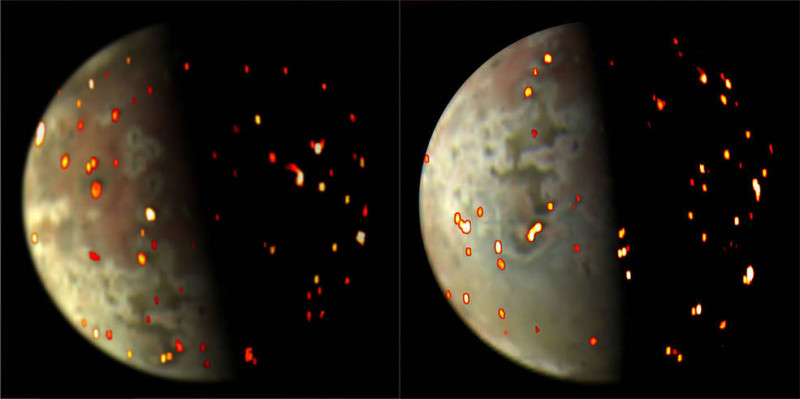Juno has studied three of Jupiter’s four largest moons
The exploration of our solar system is the basis for the journey into the vastness Universe. The “small planets”, the moons of Jupiter, are of particular interest in terms of study, with Juno having focused its mission on Io and the volcanic activity which is characterized as intense and extremely interesting.
Juno has traveled 510 million miles and studied the gas giant’s three largest moons, the For.
To date, the Juno has made 50 flybys of Jupiter and collected data from its icy worlds Europe and his Ganymede and the fiery Io.
“Io is the most volcanic celestial body known in our solar system,” said Dr Scott Boltonprincipal investigator of the Juno mission from the Southwest Research Institute in San Antonio. “By observing it over time in multiple passes, we can track how volcanoes vary—how often they erupt, how bright and hot they are, whether they’re associated with a group or solo, and whether the shape of the lava flow changes.”
Slightly larger than Earth’s moon, Io is captive not only to Jupiter, but also to its “siblings”, Europa and Ganymede. The result is that Io is constantly being ‘stretched’ and ‘squeezed’, actions linked to the creation of the lava that appears to erupt from its many volcanoes.
“We’re entering another amazing part of Juno’s mission as we draw closer and closer to Io in successive orbits. This 51st orbit will provide our closest look at this tortured moon,” said Bolton. “Our upcoming flybys in July and October will bring us even closer, leading up to our twin encounters with Io in December this year and February next year, when we fly within 1,500 kilometers of its surface. All of these flights offer spectacular views of the volcanic activity of this amazing moon. The data should be amazing,” added Mr. Bolton.
Juno has been orbiting Jupiter for more than 2,505 Earth days and has flown more than 510 million miles (820 million kilometers). The spacecraft reached Jupiter on July 4, 2016. The first science flyby took place 53 days later, and the spacecraft continued with this orbital period until its Ganymede flyby on June 7, 2021, which reduced its orbital period to 43 days. The Europa flyby took place on September 29, 2022 and reduced the orbital period to 38 days. After Io’s next two flybys, on May 16 and July 31, Juno’s orbital period will remain constant at 32 days.
“Io is just one of the celestial bodies that continue to enter Juno’s microscope during this extended mission,” said acting Juno project manager Matthew Johnson of NASA’s Jet Propulsion Laboratory in Southern California. “In addition to constantly changing our orbit to allow new perspectives of Jupiter and flying low over the night side of the planet, the spacecraft will also poke the needle between some of Jupiter’s rings to learn more about the origins and their composition”.
Source :Skai
I am Terrance Carlson, author at News Bulletin 247. I mostly cover technology news and I have been working in this field for a long time. I have a lot of experience and I am highly knowledgeable in this area. I am a very reliable source of information and I always make sure to provide accurate news to my readers.












